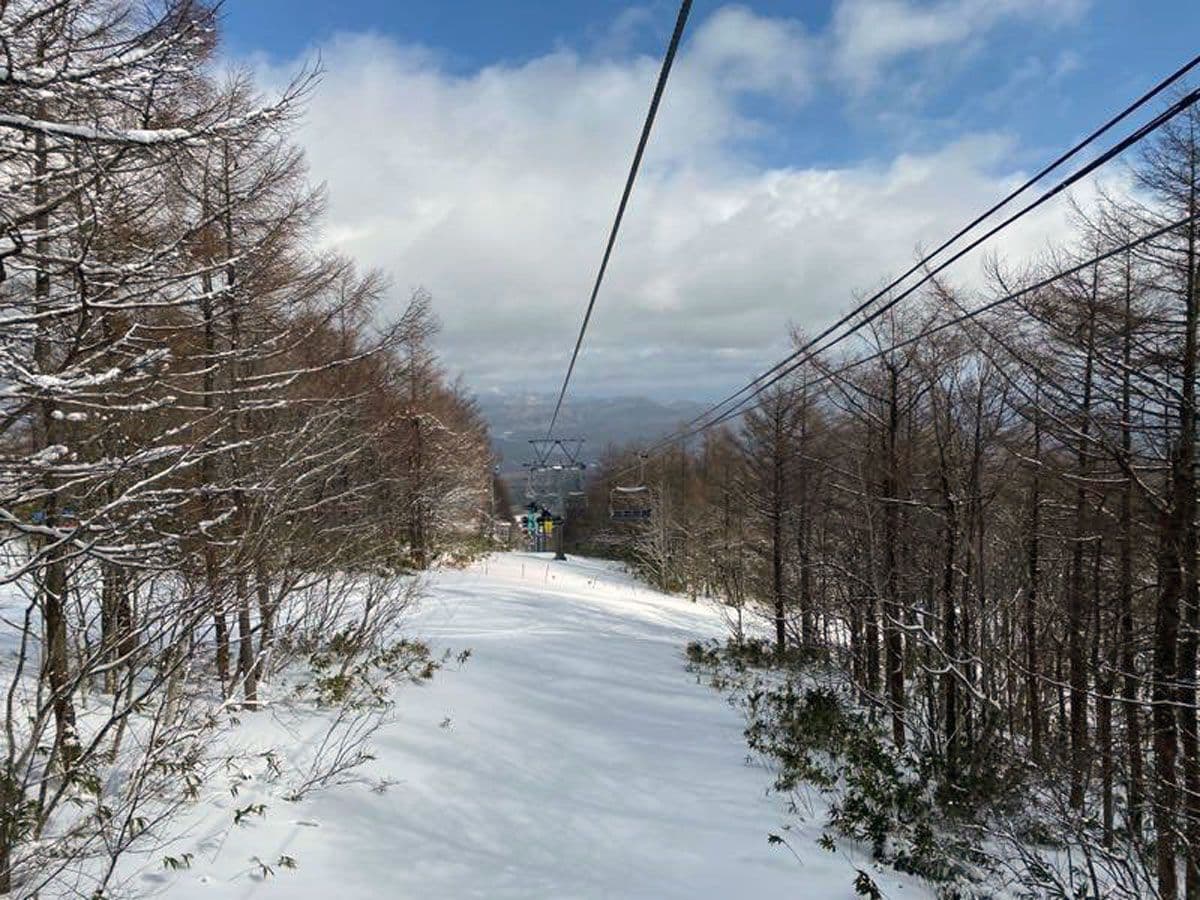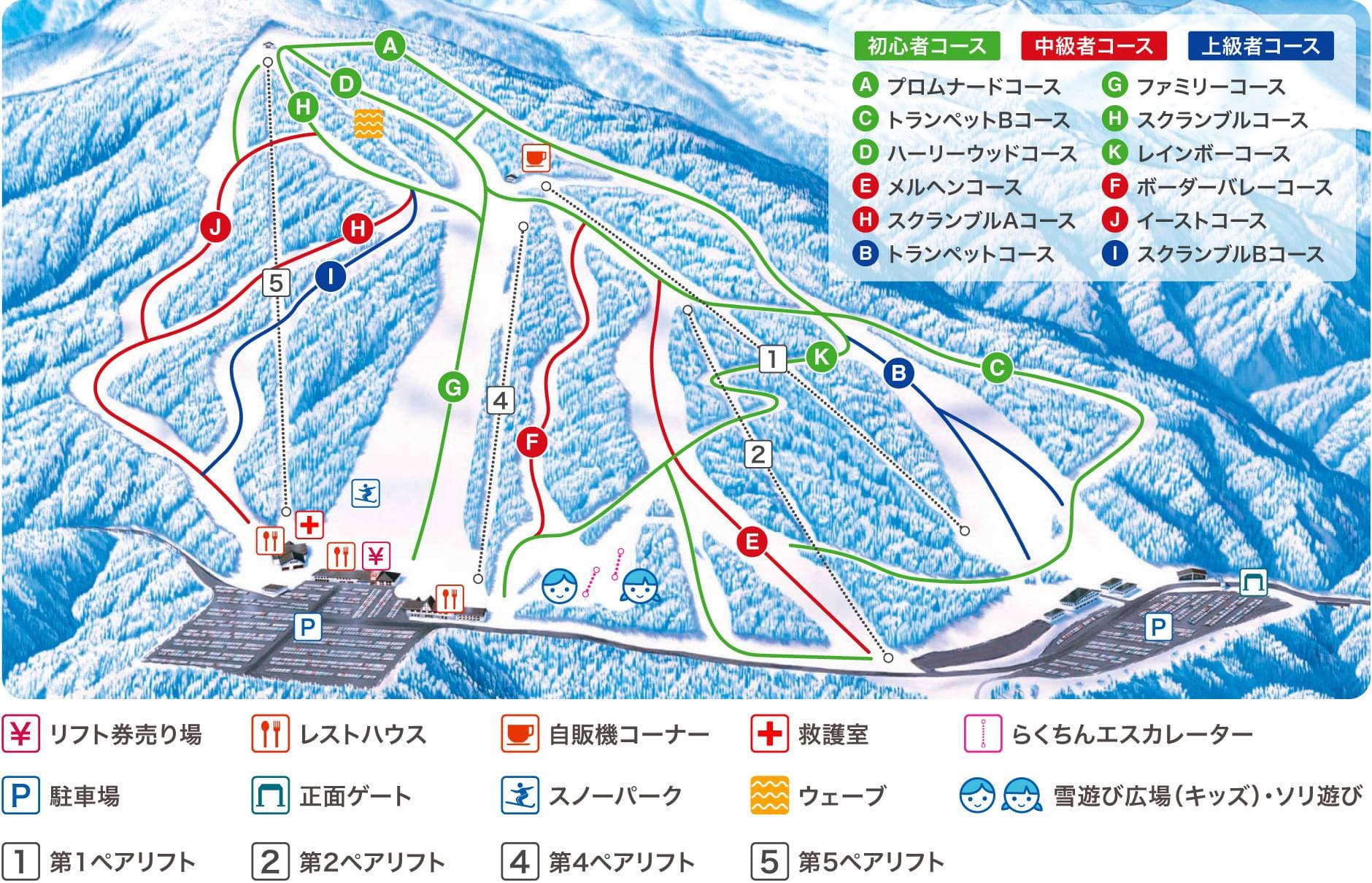Grandee Hatoriko
Carve-first calm with Kanto-friendly convenience

羽鳥湖
Quiet lifts, loud carving
Set on the shoulder of the Nasu Highlands, Grandee Hatoriko looks due north across forested ridges to a high, cold basin that holds winter well. On a clear morning the corduroy glints, steam curls from coffee at the base, and the first few runs feel like a private session. It’s a mountain built for rhythm — long blues that invite eurocarves, consistent grooming that flatters your edges, and just enough gradient up high to wake the legs without turning the day into survival skiing.
Midweek is blissfully calm. You’ll hear the clack of bar down more often than liftie shouts, and you can string together hot laps with only a quick breath at the bottom. Weekends do pull families and school groups from the Kanto side, but queues rarely tip from “hello” to headache. Most traffic stays on the lower blues and greens, leaving the upper chairs free for sustained carving and little side hits along the berms.
Affordability is part of the appeal. The lift ticket is kind to the wallet, parking is straightforward, and the cafeteria serves the winter staples you want — curry, ramen, karaage — without the sticker shock. English isn’t widespread, yet the routine is easy: clear trail boards, obvious lift flow, and staff who are unflustered and helpful. If you’ve done Japan before, Hatoriko is effortless to navigate.
Families thrive here because the base is compact, the learning area is separated enough to stay calm, and the next-step blues are genuinely confidence-building. Advanced riders still find joy in cadence — trenching corduroy, working wind buff, and hunting the few marked soft-snow lanes after a reset. There’s no gate network and trees are limited, which keeps the surface consistent and the vibe relaxed — a trade that suits Hatoriko’s keep-it-simple soul.
Resort Stats
- Vertical310m (1160m → 850m)
- Snowfall~6m
- Terrain 35% 50% 15%
- Tree Riding
- Lift Pass$28
- Lifts1 quad, 3 pair
- Crowds
- Out of Boundsnot allowed
- Night Skiing
- Family Friendly
- Trails13
- Skiable Area~60ha
- VibeCalm Kanto day-trip energy, carve culture
Trail Map

Powder & Terrain
When it resets, start on the upper quad for crisp fall-line groomers, then pivot to the marked ungroomed strips and piste edges where boot-top pockets collect along the rollers; wind buff smooths the steeper pitches after blowy nights. The pattern is simple — carve early while it’s hero snow, mine the soft margins late morning, then return to chalky lanes as temps cool. Boundaries are firm, there’s no gate network, and patrol keeps rope lines tight, so keep your day in-bounds and let the terrain’s natural flow do the work.
Who's it for?
Riders who love cadence more than chaos. If your perfect day is a string of clean arcs, a few slashy side hits, and a late-morning coffee while the valley glows, this place fits like a well-tuned board or a razor-sharp GS ski. Upper intermediates will level up fast — sightlines are friendly and pitches are honest — while advanced skiers get genuine satisfaction from carving at speed without dodging crowds. If you need glades, gates, or sidecountry to feel complete, pair Hatoriko with a tree-rich Fukushima day elsewhere on your trip.
Accommodation
Closest to the hill you’ll find pensions and small lodges tucked into the forest roads around Ten’ei. Expect cedar interiors, warm ofuro baths, and hosts who know the weather rhythm — they’ll slide breakfast earlier when the forecast screams first chair and send you out the door with a grin. Nights are early and peaceful, perfect for crews chasing dawn patrol.
If you’d rather keep things pragmatic, business hotels around Shirakawa or along the arterial road north of Koriyama make great storm-chase bases. Late check-in, coin laundry, bottomless tea in the lobby — exactly what you want when you’re swapping wax or drying gloves for another early start. Convenience stores are everywhere, so stocking up on onigiri, hand warmers, and a cheeky post-ride dessert is a two-minute errand.
For the full winter reset, poke around the onsen inns to the west. The region hides a handful of small ryokan with outdoor baths where spindrift floats through the pines. After a day of first chair to last chair, soaking under a cold sky and sitting down to a country-style dinner hits like a hard-earned reward — simple, restorative, and very Tohoku.
Food & Après
On-mountain, the cafeteria keeps it classic: katsu-curry with generous gravy, bowls of ramen that fog your goggles, and karaage that’s crisp outside and juicy inside. Coffee is basic but hot; there’s usually a sweet or two near the till that pairs nicely with a mid-morning breather. Prices are friendly enough that nobody’s splitting a bowl three ways.
Down the road, small diners deliver winter hits — sauce katsu-don, hand-cut soba, warming nabe — plus kid-proof staples if you’ve got groms in tow. Après is mellow and daylight-centric. Expect lot beers as the alpenglow fades, then a short drive to dinner or a soak. If you want something livelier, plan a one-off evening in Koriyama before rolling back toward the snow.
Getting There
From Tokyo, the simplest drive rolls up the Tohoku Expressway past Nasu to the Shirakawa area, then cuts west into the hills. In clear conditions you’re looking at roughly 3–3.5 hours from the northern suburbs; add time for central departures or active snow. Once you leave the highway, the final approach can glaze quickly — proper winter tires are non-negotiable and packing chains is smart if the forecast shows deep blue on the radar.
Public transit is doable with patience. Trains into Shirakawa or Koriyama connect with local buses and taxis into Ten’ei, but service thins midweek, so build your plan around the timetable rather than the other way round. If you’re linking a Fukushima sampler — Hatoriko plus Inawashiro, Minowa, or a Bandai-Asahi day when temperatures plunge — a rental car with decent snow tires keeps your options wide open.
Japow Travel Tips
- Lift hours: Typical winter schedule sits around ~08:30–16:00. No night skiing — stack your day front-loaded for best snow.
- Operations: Outside peak periods, one upper line may spool up a touch later on very quiet weekdays. Check the ops board at the base.
- Backcountry / gates: There’s no gate network and patrol holds a firm line on ropes. Keep it in-bounds.
- Weather & snow: Being southern Tohoku, storms bring dependable resurfacing with cool, dry mornings. Expect chalky hold between systems, wind buff after gusty nights, and dust-on-crust to soften on sunny afternoons.
- Language & payments: Limited English; ticket windows typically handle cards, but carry cash for small eateries and pensions.
- Became popular in recent years: No — it’s a steady favourite for Kanto day-trippers and local families rather than a destination trend spot.
- Prices around the resort: Cheap to mid — lift price is gentle, food is fair, and pensions are good value.
- Pairing ideas: Add Inawashiro for lake-view mileage and night lights on select evenings, or swing north to Minowa for higher base and deeper mid-winter temps when the mercury dips.
Verdict: Carve more, wait less
Grandee Hatoriko won’t flood your feed with rope-drop drama — it rewards riders who love feel over flash. Clean fall line, consistent grooming, and a layout that keeps the chair turning mean real mileage and happy legs. Fold it into a Fukushima road trip as the carve-centric day, time a visit for a midweek reset, and let the quiet rhythm do its thing.